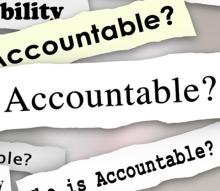
As postbacs prepare to apply for graduate school, many might be coming to you to ask for a letter of recommendation. It can be hard to know how to start these all-important letters, so here are some things to keep in mind as you draft your reference letter.
First and foremost, you should only agree to write a letter if you feel you know the person well and if you can write positively about your working experience with them. If not, you might want to mention that the requestor should contact others who could better speak to their work. Don’t feel compelled to write a letter out of obligation, especially if you feel uncomfortable writing favorably or if you think your assessment could hinder their chances of acceptance.
What You Need to Write a Letter
If you feel comfortable writing a letter of recommendation, then make sure the requestor provides you some background information. If it is for a job, they should give you their CV/resume and a copy of the job description. If it is for graduate/medical school, they should give you their CV/resume, a list of the schools they are applying to, and a copy of their personal statement. This information will be helpful background as you write your letter on their behalf. It would also be a good idea to check in with the person about the top three things they would like you to address in reference to the position or institution. For example, for graduate school, you will most likely want to speak to not only their analytical abilities but their work ethic as well. If you are writing a letter for a medical school applicant, you will want to check out the AAMC website where they offer detailed instructions for letter writers. Writers are encouraged to touch on the applicant’s competencies along four dimensions: thinking/reasoning, science, interpersonal, and intrapersonal.
Formatting
In terms of format, letters of recommendation are generally one page and one to three paragraphs long. They must be signed and dated; ideally, it will be on official letterhead. You should start by noting how long you have known this person and in what capacity. Be sure to clarify your role/title and relationship (supervisor, colleague, etc) to the applicant. Then, you will want to move on to your endorsement of the candidate. Keep in mind the three points they wanted you to address but be specific when doing so. General statements like, “Bailey is a hard worker” tend to fall flat unless supported with examples. You could rephrase it to say, “Bailey has demonstrated an excellent work ethic and commitment to the team. One of our projects required somebody from the lab to come in each weekend day to harvest cells. Bailey volunteered every time to help out and was a pivotal member of our team during busy work times.” It also helps admissions committees if you favorably compare the student to others you have known. As an example: “In terms of analytical abilities, Bailey is in the top 10% of undergraduate students that I have worked with in the past ten years.” Speaking to both their skill sets and personal characteristics is usually the winning combination. Try to address and conclude with one or two traits that make them especially suitable for where they are applying.
Be Aware of Gender Bias
We wrote about gender bias in letters of recommendation a few years ago. A study by Trix and Psenka (2003) examined 300 letters of recommendation for medical faculty positions and determined that recommenders unconsciously described candidates in stereotypically gendered ways:
- Men were described as “successful” and “accomplished” and letters for male applicants contained more repetitions of superlatives such as “outstanding” or “exceptional.”
- Women were described as “nurturing” and “compassionate” and letters for female applicants often include doubt raisers, statements like: “It appears that her health and personal life are stable.”
Letters for female applicants were shorter and lacked basic features like a description of the writer’s relationship with the applicant, comments on the applicant’s academic traits and achievements, and/or evaluative comments. Letters for males were more aligned with critical job requirements and used stronger language like “excellent research record” and “ability”. Make sure you aren’t falling prey to gender bias when writing your letter. You can copy and paste your letter into a Gender Bias Calculator here.




